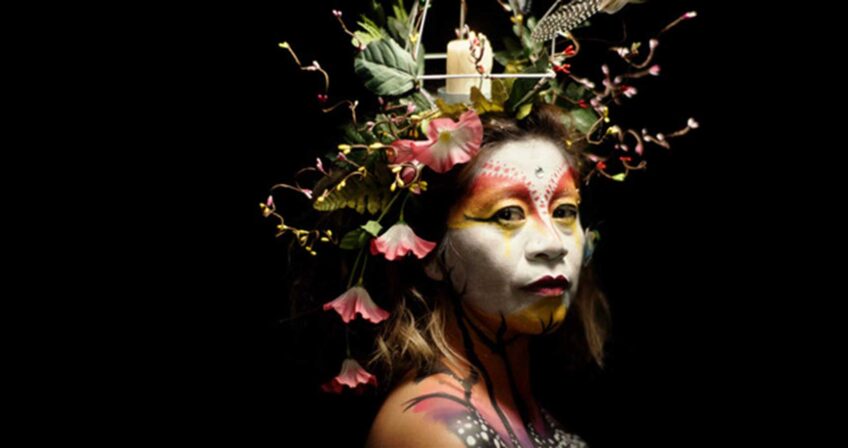ICA Watershed building’s history provides inspiration for new large-scale installations

Combining a delightful shuttle ride across Boston Harbor with a captivating exhibition at its site located in the Boston Harbor Shipyard and Marina in East Boston, the Institute of Contemporary Art/Boston (ICA) offers visitors a splendid way to spend a summer day.
Curated by the ICA’s Ruth Erickson and Anni Pullagura, “Revival: Materials and Monumental Forms,” on view through September 5, is, like the facility housing it, a celebration of the power within repurposed objects. Built in the 1930s as a pipe and sheet metal factory and eventually shut down and condemned, the ICA revamped the cavernous building into the ICA Watershed, its showcase for large-scale works of contemporary art.
Displayed inside the mammoth space, works composed of such found materials as cast-off clothing, trash, broken auto lights, bottle caps and other discards hold their own in scale and power as well as poignant intimacy.

Ebony G. Patterson, detail from “…and the dew cracks the earth, in five acts of lamentation…between the cuts…beneath the leaves…below the soil…” 2020 PHOTO: SUSAN SACCOCCIA
Instantly spellbinding are five wall-size panels by Jamaican Ebony G. Patterson, 41, whose three-dimensional collage of cut paper photographic prints conjures the ecstasy and churning cycle of growth and decay within nature. Her assemblage of flowers, birds, and butterflies portrays a paradise that close-up reveals occasional glimpses of partial female figures, such as a smiling face and a headless, ornately clothed torso. Entitled “…and the dew cracks the earth, in five acts of lamentation…between the cuts…beneath the leaves…below the soil…” (2020), the installation echoes ancient rituals that memorialize those who are unseen or overlooked.
Crossing generations as well as geographies, the exhibition includes a wall hanging by Ghanian El Anatsui, 78, renowned for lyrical tapestries composed of discarded bottle caps. Here, his undulating “Area B” (2007) is a shimmering topographic map that creates wonder out of refuse — legions of flattened bottle caps threaded together with copper wire. With its silver and gold palette and intricate beauty, the sculpture inspires contemplation as well as reflection on the convergence of trade, consumerism, and a changing earth.
In her “Heads/Tails: Walker & Broadway 2” (2020), a 44-foot wide by 18-foot high mural, Los Angeles-based Madeline Hollander, 36, choreographs the flickering patterns of jewel-like glass shards—fragments of auto head and taillights gathered from junkyards and collision centers. They blink on and off timed to sunrise and sunset as well as changes in traffic signals at an intersection
in Manhattan.
A silent monument to the social and economic history of an urban community, “Non Orientable Paradise Lost 1667” (2017) by Ghanian Ibrahim Mahama, 35, repurposes already recycled objects — shoe shiners’ crates packed with discarded household and street detritus. Stacked into towers, they gain the power of archeological relics, evidence of human fragility, persistence, ingenuity, and labor.
While Mahama’s discards speak for themselves, a tower by Karyn Olivier, 54, of Trinidad and Tobago, speaks of absences. Conjuring awe out of everyday garb, Olivier’s 23-foot high structure, “Fortified” (2018–2022), evokes the unseen presence of the children and adults who once wore the used clothing that covers her immense brick wall. Built by hand, brick by brick, and laden with colorful, ordinary clothing, “Fortified” is both large in scale and intimate, and a tribute to human vulnerability and strength.






